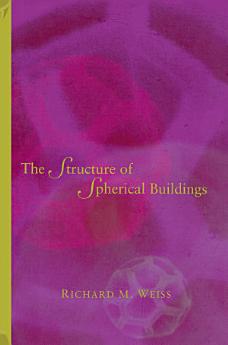The Structure of Spherical Buildings
জুলাই ২০২০ · Princeton University Press
ইবুক
144
পৃষ্ঠা
family_home
যোগ্য
info
reportমূল্যাংকন আৰু পৰ্যালোচনা সত্যাপন কৰা হোৱা নাই অধিক জানক
এই ইবুকখনৰ বিষয়ে
This book provides a clear and authoritative introduction to the theory of buildings, a topic of central importance to mathematicians interested in the geometric aspects of group theory. Its detailed presentation makes it suitable for graduate students as well as specialists. Richard Weiss begins with an introduction to Coxeter groups and goes on to present basic properties of arbitrary buildings before specializing to the spherical case. Buildings are described throughout in the language of graph theory.
The Structure of Spherical Buildings includes a reworking of the proof of Jacques Tits's Theorem 4.1.2. upon which Tits's classification of thick irreducible spherical buildings of rank at least three is based. In fact, this is the first book to include a proof of this famous result since its original publication. Theorem 4.1.2 is followed by a systematic study of the structure of spherical buildings and their automorphism groups based on the Moufang property. Moufang buildings of rank two were recently classified by Tits and Weiss. The last chapter provides an overview of the classification of spherical buildings, one that reflects these and other important developments.
The Structure of Spherical Buildings includes a reworking of the proof of Jacques Tits's Theorem 4.1.2. upon which Tits's classification of thick irreducible spherical buildings of rank at least three is based. In fact, this is the first book to include a proof of this famous result since its original publication. Theorem 4.1.2 is followed by a systematic study of the structure of spherical buildings and their automorphism groups based on the Moufang property. Moufang buildings of rank two were recently classified by Tits and Weiss. The last chapter provides an overview of the classification of spherical buildings, one that reflects these and other important developments.
লিখকৰ বিষয়ে
Richard M. Weiss is William Walker Professor at Tufts University. He is the coauthor, with Jacques Tits, of Moufang Polygons.
এই ইবুকখনক মূল্যাংকন কৰক
আমাক আপোনাৰ মতামত জনাওক।
পঢ়াৰ নির্দেশাৱলী
স্মাৰ্টফ’ন আৰু টেবলেট
Android আৰু iPad/iPhoneৰ বাবে Google Play Books এপটো ইনষ্টল কৰক। ই স্বয়ংক্রিয়ভাৱে আপোনাৰ একাউণ্টৰ সৈতে ছিংক হয় আৰু আপুনি য'তে নাথাকক ত'তেই কোনো অডিঅ'বুক অনলাইন বা অফলাইনত শুনিবলৈ সুবিধা দিয়ে।
লেপটপ আৰু কম্পিউটাৰ
আপুনি কম্পিউটাৰৰ ৱেব ব্রাউজাৰ ব্যৱহাৰ কৰি Google Playত কিনা অডিঅ'বুকসমূহ শুনিব পাৰে।
ই-ৰীডাৰ আৰু অন্য ডিভাইচ
Kobo eReadersৰ দৰে ই-চিয়াঁহীৰ ডিভাইচসমূহত পঢ়িবলৈ, আপুনি এটা ফাইল ডাউনল’ড কৰি সেইটো আপোনাৰ ডিভাইচলৈ স্থানান্তৰণ কৰিব লাগিব। সমৰ্থিত ই-ৰিডাৰলৈ ফাইলটো কেনেকৈ স্থানান্তৰ কৰিব জানিবলৈ সহায় কেন্দ্ৰত থকা সবিশেষ নিৰ্দেশাৱলী চাওক।






